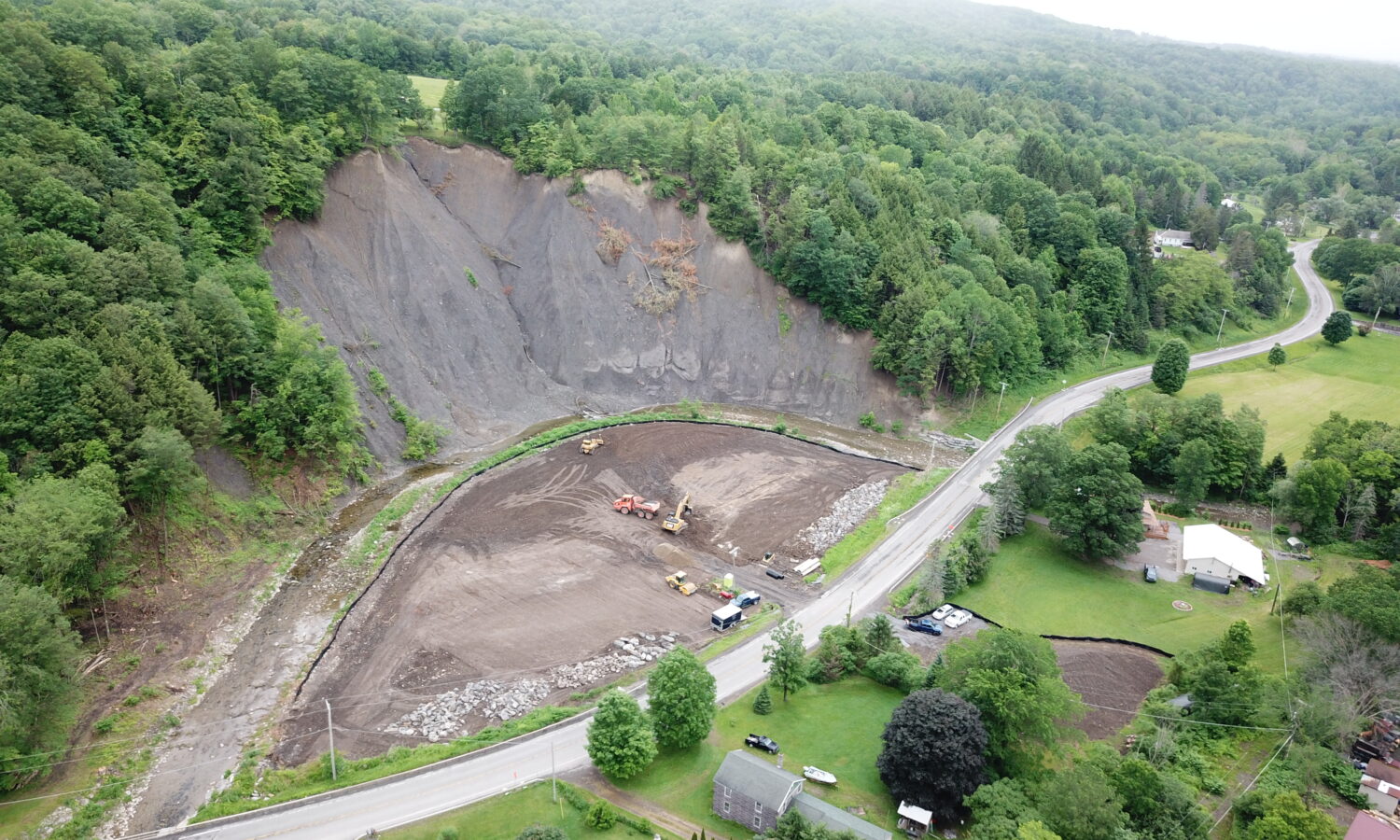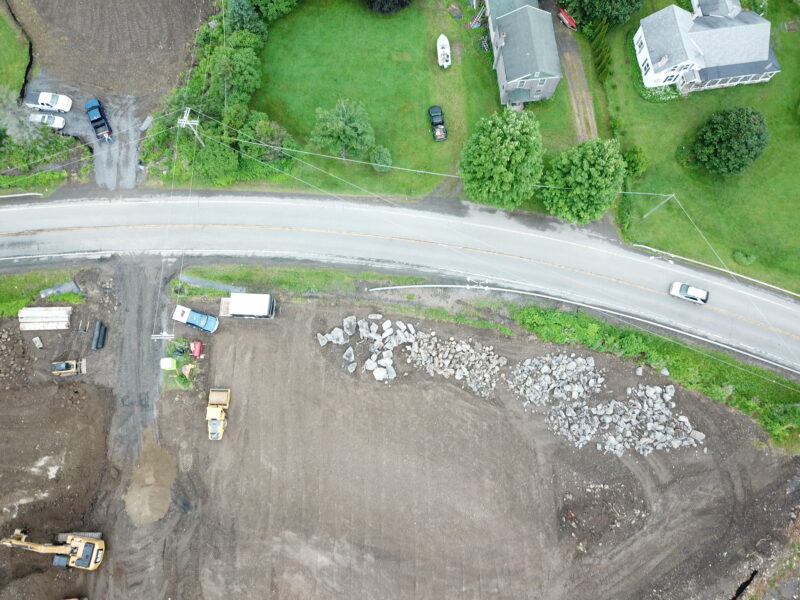Project Overview
Since 2006, the Town of German Flats, New York, has seen what used to be referred to as “100-year floods” multiple times, the worst occurring in 2006 and 2013. Most of the flood damage was caused by the Fulmer Creek. Flooding issues of this magnitude result in significant damage to the local villages along Fulmer Creek. Our team was retained to mitigate future flooding by restoring the flood plain.
CHALLENGE
We were tasked with the challenge of redirecting the creek, itself. The Fulmer Creek ran along a 200-ft high bank failure that created problems with each flood season. A tremendous amount of dirt and debris falls into the creek and is redeposited in other areas along the creek. When the Fulmer Creek floods, erosion issues intensify, creating safety issues. One major challenge was building the new creek while maintaining the flow of the existing creek. This meant tying into the existing creek while not interrupting the flow. We set up two diesel pumps that could handle the normal flow of 8 to 12 CFS, however the adverse weather this season, had average flow rates higher than normal. One storm event had the creek flow rate exceeding 1,700 CFS, which caused a flood event. The project work limits also proved challenging. We simultaneously constructed the new stream, stockpiled the excavated material, relocated the existing creek into the new stream bed, then relocated the stockpiled material into the old creek bed.
SOLUTION
The solution entailed the relocation of 850-ft. of creek away from the 220-ft. high bank failure. Construction of a compound channel with a shelf and a floodplain bench and boulder revetments with live willow staking, and other geographical formations helped control the flow of water. The stabilization included riffle grade control structures, boulder deflector vanes, random channel roughness, random boulder clusters, stacked boulder wall with vegetated shelf, coir log with cobble toe and live staked boulder retaining walls. To manage the creeks varying flow rates of 5 cu. ft. per second to 150 cu. ft. per second, Godwin Pumps 30-inch electric pumping system was retained. Their pumping system successfully handled the higher than normal flows. The increased pump size minimized down time associated with extremely high flow rates. We mitigated the lack of stockpile / working area by relocating the material to the opposite side of the existing creek. Working with the project engineer and the DEC, we developed a creek crossing plan to utilize a temporary stream crossing. The temporary stream crossing allowed us to place, fill, and stockpile material on the other side, alleviating congestion on-site.
RESULT
The communication and coordination between local DEC officials and members of the town government made challenging situations navigable. Together, our team successfully redirected the existing creek away from bank failures and constructed a compound channel that will effectively control the flow of water during future flood seasons.










